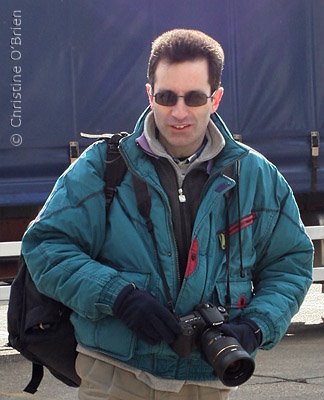Shooting with an IR Rebel (digital infrared photography)

Invisible light photography. Have you ever wondered what it would be like to take photos using light that you can't see. Well, you may have seen that a couple of the images that I have put up to accompany my blog have been taken with an infrared modified camera (a Canon Digital Rebel XT, or EOS 350D as the model is known over here). I will detail a bit about using this camera and the reasons for choosing it. Clearly this is in no way a review of the camera functions. In almost every respect it is a normal camera, and there are plenty of reviews. If you were to put it beside a normal Rebel XT it would look identical, and the menus and controls all work in the same way. The only change is that it has had its infrared (IR) blocking filter replaced with one that allows IR light to pass (just taking out the filter would not enable the camera to focus to infinity). If someone were to pick it up and use it in the normal way, he or she would notice nothing different until they came to view the image, at which point they would probably wonder why someone had poured diluted tomato soup into the camera - images taken without a filter come out with an orange/red cast.
The technique for making IR images on film is to use a specialised film that is sensitive to both visible and IR light and then use a filter to cut out as much of the visible light as is desired. Some photographers favour a dark red filter (so combining the red end of the spectrum with IR for a shorter exposure time), but I have always preferred to use a visually opaque filter (Lee 87) and cut out all the visible light, relying on the IR light for the whole exposure.
When I first went to digital I experimented with a normal camera. I used a Minolta Dimage 7, which had quite good sensitivity to infrared (seen as a problem by most people, including Minolta themselves). I also tried several Canon SLRs. The IR filtration on Canon's cameras is so severe that to get a decent exposure outside at 100 ISO at f8 would often require a shutter speed of around 15 minutes (and if you let it do it's long exposure noise reduction - taking a blank frame of the same duration after the exposure and subtracting the noise - that became half an hour). After all of that I can tell you that the results weren't good.
I placed an order for a modified EOS 350D from Hutech in the USA (which is why it is badged as a Rebel XT, the name under which it is sold in the States). When it arrived I was interested not only in the image quality, but curious to see what sort of shutter speeds would be needed. I was confident about reducing the 15 minutes for the normal camera, but by how much? Using Konica IR film and the Lee 87 filter the exposure times had often been around 30 seconds. Would they be as good as that? Not only were they much shorter, but I was amazed to find that I could use the normal meter (before putting the filter over the lens) as a guide. The amount of visible light is never an absolute guide to the IR levels, and light meters don't measure IR, but I have found that I am normally within about two stops and can simply fine tune my exposure to suit. In other words the camera is about as sensitive to IR as it is to visible light. As you can imagine I was amazed and delighted. The other huge surprise is that the camera will even focus through the filter, as long as it has something with good contrast to lock on to. On most lenses IR light focuses at a different point from visible light, and so some lenses have a mark on them to help you to make a compensation. Some lenses don't. That is not a problem with this camera. Finally, because of the need to put an opaque filter over the lens it is not normally a good idea to hand hold, so a tripod is needed as a framing aid, if not for stability.
So what results do you get. Straight out of the camera the image looks incredibly red/magenta. I have the camera set to save RAW files and I think this is essential (and I really do mean essential) for good results. I have tried several RAW converters, but now use DXO Optics Pro. In spite of its quite horribly designed controls and layout (don't get me started) it gets the best results that I have seen. Capture One comes a close second with Camera RAW (Adobe) surprisingly not handling the extreme colour correction as I would want. The images that result are not truly monochrome. There are differences in wavelength, but of course these are beyond the visible spectrum, so there is no such thing as true or correct colours. With the colour enhanced a bit and the image balanced, skies tend to look a bit yellow, and trees look a bit blue. It is quite easy to reverse this if desired.
Infrared image taken in Norway 2005

0 Comments:
Post a Comment
<< Home